Darabgerd: One Of The Oldest Cities Dated To Achaemenid Era
A. Sutherland - AncientPages.com - Remains of the ancient historical city of Darabgerd (Darabjerd) are situated six kilometers southwest of the modern town of Darab in Fars province, Iran.
Mentioned in very ancient literary works of this country, Darabgerd was one of the oldest and most prominent cities of the Achaemenid Empire.
Left: Ruins of Darabgerd, source; Right: Darius The Great, source
A legend ascribes the foundation of the city to Darius the Great (550–486 BC), the third king of the Persian Achaemenid Empire (550–330 BC).
Other medieval sources suggest that Dara, either an Achaemenid king or one of the Frataraka "maker of fire" or "keeper of fire" rulers of Arsacid Persis, could be the founder of the city.
It was even proposed that Darius III was the last Achaemenid King of Kings of Persia.
The place's earlier name was Darabgerd (Daráb-gerd (Darius-town or the land of Darius) - and now, Darab was not the only town founded by Darius I.
It might have been the first circular structure built by the third king of the Empire and is among old Persian cities having a circular plan and four gates.
The idea of planning circular cities is old and dates back to the time of the Assyrians, whose famous military camps were circular-shaped enclosures.
Position of the gates of Darabgerd, which is visible on satellite photo (adapted from the Google Earth site). source
However, in Persia, the design of round cities also has a long tradition. According to Herodotus (I. 98), Ecbatana, the Median capital in the late 8th century BC, was designed as a circular system; encircled by seven rings of walls. Since the Parthian period, several circular cities such as Hatra and Darabgerd have been noteworthy.
Darabgerd is among old Persian cities with a circular plan and four gates, but so is an ancient town in Media in western Iran – Ecbatana.
According to Herodotus, the city was chosen as the Medes' capital in the late 8th century BC by a Median king, Deioces.
The governmental citadel was located at the top of the dome-shaped mountain. A very high circular rampart and a deep trench protected the city.
Today, in the vicinity of the city, there are some remains of the citadel in the form of earthworks arranged in a circle around an isolated rock and a giant bas-relief carved on the vertical face of a stone, representing the victory of the Sasanian king Shapur I over the Roman emperor Valerian in 260 AD.
There are also three fortresses north of the Darabgerd archaeological site.
Drawing after engraving The Seven Great Monarchies Of The Ancient Eastern World, Vol 3. (7). Shapour cave is located in the Zagros Mountains in southern Iran, about 6 km from the ancient city of Bishapur. This cave is near Kazerun in Chogan valley, the site of polo/chogan in the Sasanian period. In the cave, on the fourth of five terraces, stands the colossal statue of Shapur I, the second ruler of the Sasanid Empire. The statue was carved from one stalagmite. The height of the figure is 7 m. high and its shoulders are 2 m. wide, and its hands are three m. long. source
Around this ancient city is a vast conical wall (originally more than 10 m high) built of stone, lime, and clay. Today, the erosion process damaged the wall, which is only 7 m tall, but the construction survived over 2,000 years.
The salt dome of the ancient city of Darabgerd is surrounded by a round wall standing at the center of the vast, green plain of Darab. Once, it had a prominent place at the center of the ancient town.
During the Sasanid period (considered the peak of ancient Iranian culture), Darabgerd was a vital capital city of Darabgerd-Khurreh, widely known for manufacturing jasmine oil, textiles, famous carpets, and valuable mineral salts.
However, the most famous and valuable product of Darabgerd was a highly unique bituminous mineral oil, probably collected in the city or the nearby mountains and used as medicine.
Other ancient sources say that the original shape of Darabgerd (probably more than 2,500-plus-year-old) was triangular, not circular. However, archeological evidence indicates that Darabgerd was neither perfect geometrically nor did it have a concentric or radial system of streets.
In the 12th century, Darabgerd was abandoned.
Written by – A. Sutherland - AncientPages.com Senior Staff Writer
Updated on January 20, 2024
Copyright © AncientPages.com All rights reserved. This material may not be published, broadcast, rewritten or redistributed in whole or part without the express written permission of AncientPages.com
Expand for referencesMore From Ancient Pages
-
 Unique 4,000-Year-Old Board Game – Unearthed In Oman
Archaeology | Jan 18, 2022
Unique 4,000-Year-Old Board Game – Unearthed In Oman
Archaeology | Jan 18, 2022 -
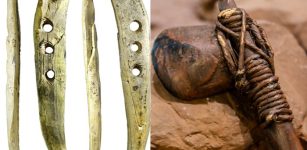 Rare Mammoth Ivory Tool Offers Evidence Of Ropemaking In Central Europe More Than 35,000 Years Ago
Archaeology | Feb 5, 2024
Rare Mammoth Ivory Tool Offers Evidence Of Ropemaking In Central Europe More Than 35,000 Years Ago
Archaeology | Feb 5, 2024 -
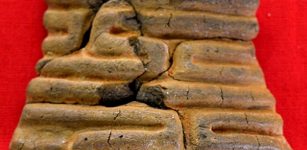 3,000-Year-Old Piece Of Pottery Unearthed On Okinawa Island, Japan
Archaeology | Feb 21, 2017
3,000-Year-Old Piece Of Pottery Unearthed On Okinawa Island, Japan
Archaeology | Feb 21, 2017 -
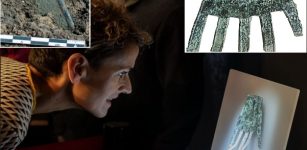 Earliest Document Written 2,100 Years Ago May Rewrite History Of The Basque Language
Archaeology | Nov 17, 2022
Earliest Document Written 2,100 Years Ago May Rewrite History Of The Basque Language
Archaeology | Nov 17, 2022 -
 New Video Footage Reveals Intriguing Viking-Style Shipwreck At The Bottom Of Norway’s Largest Lake Mjøsa
Archaeology | May 5, 2023
New Video Footage Reveals Intriguing Viking-Style Shipwreck At The Bottom Of Norway’s Largest Lake Mjøsa
Archaeology | May 5, 2023 -
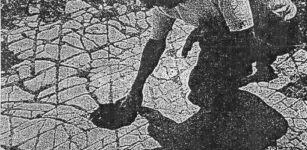 Oklahoma’s Ancient Mosaic Floor With Mysterious ‘Post Holes’ Could Re-Write History Of North America
Civilizations | Aug 10, 2018
Oklahoma’s Ancient Mosaic Floor With Mysterious ‘Post Holes’ Could Re-Write History Of North America
Civilizations | Aug 10, 2018 -
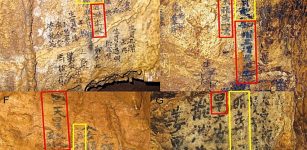 ‘Graffiti’ Found On The Walls Of Dayu Cave, China
News | Aug 25, 2015
‘Graffiti’ Found On The Walls Of Dayu Cave, China
News | Aug 25, 2015 -
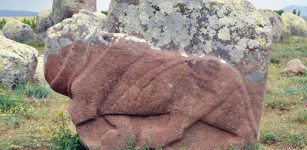 Mystery Of Gigantic Lion Sculptures Dated To The Hittite Era
Archaeology | Apr 14, 2016
Mystery Of Gigantic Lion Sculptures Dated To The Hittite Era
Archaeology | Apr 14, 2016 -
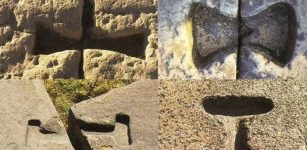 Mystery Of Ancient Metal Clamps – Advanced Lost Technology Modern Science Still Cannot Explain
Ancient Technology | Jul 31, 2020
Mystery Of Ancient Metal Clamps – Advanced Lost Technology Modern Science Still Cannot Explain
Ancient Technology | Jul 31, 2020 -
 Bronze Age Finding Offer New Clues On The Beginnings Of Cardiff
Archaeology | Jul 15, 2022
Bronze Age Finding Offer New Clues On The Beginnings Of Cardiff
Archaeology | Jul 15, 2022 -
 The Hidden Face Of The Elusive Master
Featured Stories | Jun 8, 2018
The Hidden Face Of The Elusive Master
Featured Stories | Jun 8, 2018 -
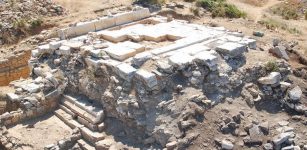 Excavations Begin In Ancient City Of Antiocheia Ad Cragnum, Turkey
Archaeology | Sep 4, 2015
Excavations Begin In Ancient City Of Antiocheia Ad Cragnum, Turkey
Archaeology | Sep 4, 2015 -
 Mystery Of The Lost Arctic Civilization- Two Ancient Mummies Found At The Zeleny Yar Necropolis
Archaeology | Jul 20, 2017
Mystery Of The Lost Arctic Civilization- Two Ancient Mummies Found At The Zeleny Yar Necropolis
Archaeology | Jul 20, 2017 -
 The Fierce Great Heathen Army And The Invasion Of East Anglia
Featured Stories | Aug 8, 2022
The Fierce Great Heathen Army And The Invasion Of East Anglia
Featured Stories | Aug 8, 2022 -
 Underwater Stone Age Village Habonim North Found Off Israel’s Carmel Coast Thrived During Climate Change
Archaeology | Aug 1, 2024
Underwater Stone Age Village Habonim North Found Off Israel’s Carmel Coast Thrived During Climate Change
Archaeology | Aug 1, 2024 -
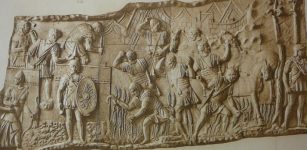 Secret Police In Ancient Rome – Frumentarii: Who Were They And What Was Their Role?
Featured Stories | Aug 12, 2019
Secret Police In Ancient Rome – Frumentarii: Who Were They And What Was Their Role?
Featured Stories | Aug 12, 2019 -
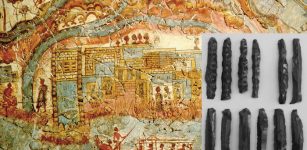 Analysis Of Ancient Tools Challenges Long-Held Ideas About What Drove Major Changes In Ancient Greek Society
Archaeology | Aug 23, 2022
Analysis Of Ancient Tools Challenges Long-Held Ideas About What Drove Major Changes In Ancient Greek Society
Archaeology | Aug 23, 2022 -
 ‘Be Wise As Serpents And Harmless As Doves’ – The Story Of The Serpent People And Their Guidance
Civilizations | May 7, 2014
‘Be Wise As Serpents And Harmless As Doves’ – The Story Of The Serpent People And Their Guidance
Civilizations | May 7, 2014 -
 Rare Viking Boat Burial At Kiloran Bay In Colonsay, Scotland Remains A Fascinating Find
Featured Stories | Mar 6, 2023
Rare Viking Boat Burial At Kiloran Bay In Colonsay, Scotland Remains A Fascinating Find
Featured Stories | Mar 6, 2023 -
 Mysterious ‘Temple Of The Crossed Hands’ Of Kotosh – One Of The Oldest Structures In Peru
Featured Stories | Mar 15, 2023
Mysterious ‘Temple Of The Crossed Hands’ Of Kotosh – One Of The Oldest Structures In Peru
Featured Stories | Mar 15, 2023



